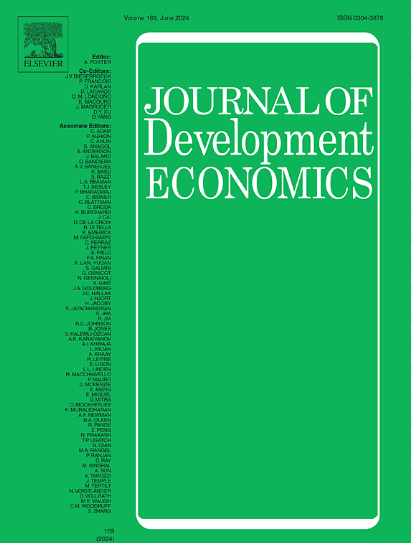Unveiling the Cosmic Race: Skin tone and intergenerational economic disparities in Latin America and the Caribbean
IF 4.6
1区 经济学
Q1 ECONOMICS
引用次数: 0
Abstract
This paper examines how skin tone shapes intergenerational economic disparities across 25 Latin American and Caribbean countries. First, it analyzes the distribution of ethnoracial identities and skin tone, confirming Mestizo predominance and revealing how broad categories obscure substantial phenotypic diversity. Second, it documents non-linear gaps in income and education, with darker skin tones consistently linked to economic disadvantages. A variance decomposition shows that skin tone explains significant within-group variation, offering explanatory power beyond self-reported ethnoracial categories. Finally, using mothers’ education as a benchmark, the study provides novel cross-country evidence on skin tone gaps in absolute educational intergenerational mobility, revealing barriers to upward mobility for darker-skinned individuals. Robustness checks with machine-assessed skin tone data from Mexico, incorporating additional parental and contextual controls, confirm these disparities. These findings underscore the need to account for phenotypic variation when studying economic inequality in Latin America.
揭示宇宙种族:拉丁美洲和加勒比地区的肤色和代际经济差距
本文研究了肤色如何影响25个拉丁美洲和加勒比国家的代际经济差异。首先,它分析了种族身份和肤色的分布,证实了混血儿的优势,并揭示了广泛的类别如何掩盖了实质性的表型多样性。其次,它记录了收入和教育方面的非线性差距,深色肤色始终与经济劣势联系在一起。方差分解表明,肤色解释了显著的组内差异,提供了超越自我报告的种族类别的解释力。最后,以母亲的受教育程度为基准,该研究为绝对教育代际流动中的肤色差距提供了新的跨国证据,揭示了肤色较深的个体向上流动的障碍。对来自墨西哥的机器评估肤色数据进行稳健性检查,并结合额外的父母和环境控制,证实了这些差异。这些发现强调了在研究拉丁美洲的经济不平等时需要考虑表型变异。
本文章由计算机程序翻译,如有差异,请以英文原文为准。
求助全文
约1分钟内获得全文
求助全文
来源期刊

Journal of Development Economics
ECONOMICS-
CiteScore
8.30
自引率
4.00%
发文量
126
审稿时长
72 days
期刊介绍:
The Journal of Development Economics publishes papers relating to all aspects of economic development - from immediate policy concerns to structural problems of underdevelopment. The emphasis is on quantitative or analytical work, which is relevant as well as intellectually stimulating.
 求助内容:
求助内容: 应助结果提醒方式:
应助结果提醒方式:


